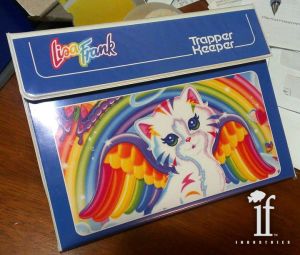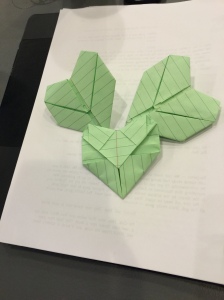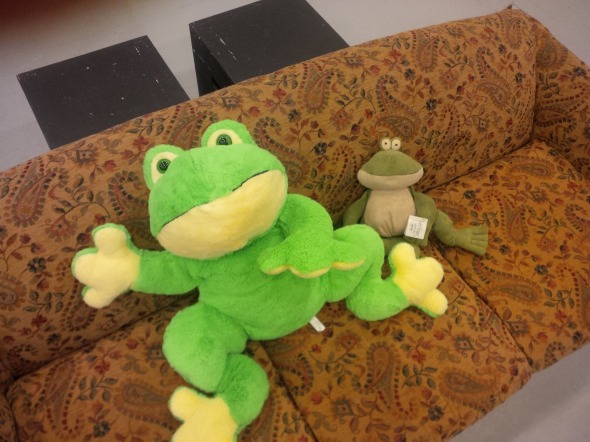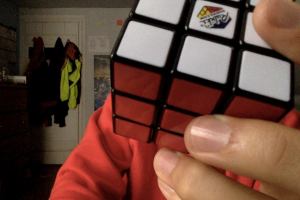When you’re a teenager, sometimes the right song, book, or movie has the power to change your world. As Kenny and Benji begin to realize that they are more than just friends, they use the underground comic book SHADE THE CHANGING MAN as a touchstone for their burgeoning relationship.


SHADE is more than just a random comic book from the 1990s. This dark, subversive story was one of the first comic books to explore transgender issues and same-sex romance, and its story arcs surrounding creating your own family, struggling with identity, and traveling across an America rife with larger-than-life dangers resonate with EDITH.
Like EDITH, SHADE THE CHANGING MAN follows a trio of young people. The eponymous Shade is an alien from the planet Meta sent to America to battle the American Scream, a madness born out of consumerism and greed enveloping the country. As his name suggests, Shade can shift form, using a powerful garment called the M-Vest. Shade teams up with Kathy George, a young girl whose parents have been murdered by a deranged killer. Later, the two meet cool, collected Lenny. She serves as a protector and voice of reason for the fragile Kathy, and later, she and Kathy begin a relationship. The two try to keep their relationship a secret, but Shade discovers it in the issue that Kenny references, when Shade manifests as a blanket on which the two girls have sex. Later, needing a new body as host but also jealous of Lenny, Shade takes the shape of a woman, and manages to sleep with both women. Though his body is female, Shade still retains the mindset of a man. When Kathy discovers his deception, she abandons him, though the two eventually reconcile.

The original 1977 version of Shade, before his Vertigo makeover
SHADE was originally created for DC Comics in 1977 by Steve Ditko. The series only lasted eight issues — in that time, Shade was given new parents because his first set failed the parenting exam. At age 13, Shade was given an operation that made him a rational adult. These tidbits live on in Edith’s made-up story about her multi-parented home planet and battle with “evil, shape-changing aliens.” Perhaps Edith has copies of the original comic stashed away in the barn?

Peter Milligan’s Shade, the Changing Man
The Shade story arc that Kenny and Benji reference launched in 1990, when British comic writer Peter Milligan appropriated Ditko’s character, turning him into a much darker, tortured character. Shade’s M-Vest became the Madness Vest and gave Shade the power to warp reality as well as change shape. The original 1977 storyline was explained away as a story Shade made up to entertain himself while traveling to Earth. (We can see why Edith likes this guy!)
Milligan’s SHADE took on much edgier content. Shade required a human host for his travels on Earth, so he inhabited the body of recently-executed serial killer Troy Grenzer — the man who had killed Kathy George’s parents. Throughout the series, Kathy and Shade both struggle with madness and delusions because of their traumatic experiences, and this alternately bonds them and tests their relationship. Milligan used SHADE to critique what he saw as a vacuous, commercial American culture; The American Scream manifests as a skeleton dressed like Uncle Sam, and his victims’ private insanities are turned into reality. Benji’s Mom definitely wouldn’t want Benji reading about Shade’s adventures against the Scream, which include a re-enactment of the John F. Kennedy assassination; a battle against a possessed Hollywood film camera; a mission quieting the delusions of a man filling New York City with trash to protest “the Nameless” (homeless people and vagabonds); and the prevention of a man torturing those he sees as “abnormal” by running them through a horrific “normalcy machine.” A unique feature of Milligan’s comics, illustrated by Chris Bachalo, is the use of a bright, neon 90s color palette, despite the horror and violence of the stories.

Probably no one would mind if Edith shot the American Scream
Though SHADE remained a niche comic book, readers clearly had a taste for its dark, edgy content. In 1993, DC editor (and totally rad lady) Karen Berger created an imprint of DC called Vertigo, which featured comics geared toward mature readers that tackled heavy themes. The SHADE comics made the switch to the Vertigo brand in Issue #33 and were part of the “British invasion” that found a creative home with Vertigo. Other popular titles included the work of British writers Neil Gaiman and Grant Morrison, with SANDMAN and ANIMAL MAN, respectively, as well as the comics of American writer Alan Moore.
In the early 90s, Kenny would have had to go out of his way to find the SHADE comics. Even today, the seventy issues have not been collected into one volume, and it takes a bit of Internet digging to find all the issues in the series. The presence of the comic in EDITH speaks to its young characters’ determination to find a story that expresses who they are. Kenny shares his comics with Benji, and Benji shares his dictionary definitions with Kenny. Edith makes up her own stories. As we explore the stories that are important to Edith, Kenny, and Benji, we wonder what other stories and pop culture hit home with you growing up?
This slideshow requires JavaScript.

The many looks of Shade
 Photo by Aaron Parayno
Photo by Aaron Parayno 






































































































